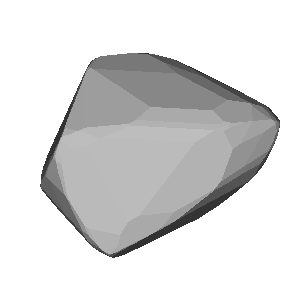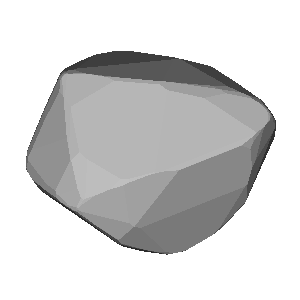2018-06-13 / 4UC 329-084180 / (940) Kordula
| # | OBS | Observer | Occ | Meth. | Instr. | CC | TSRC | UT1 | UT2 | UT3 | UT4 | UT2E | UT3E | Dur. | Chrd |
|---|---|---|---|---|---|---|---|---|---|---|---|---|---|---|---|
| 1 | show | Carles Schnabel | O+ | VID | M250 | ES | GPS++ | 02:13:08 | 02:15:31.87 | 02:15:38.59 | 02:19:05 | 1.28 | 0.96 | 6.72 | 88.0 |
| 2 | show | C. Perello/A. Selva | O+ | VID | M500 | ES | GPS++ | 02:14:01 | 02:15:31.90 | 02:15:37.74 | 02:17:01 | 0.08 | 0.16 | 5.84 | 76.5 |
2 observations found in db: euraster
Available (probably) matching predictions (click on the link to switch):| JPL#62 : 996f1da6-4f8a-471f-9f57-cfc934aeee0b [db: observed] |
| JPL#62 : 7c174d28-7236-4f7c-b508-ea42a98d01da [db: observed] |
| JPL#62 : 6c98b679-04eb-4cf7-9224-dad6ada0a521 [db: observed] |
Using prediction 996f1da6-4f8a-471f-9f57-cfc934aeee0b for map and profile fit
| Ellipse and circular profile fits to the timings (chords) |
|---|
|
|
Auto-Fit Result: X0,Y0 = 113.0, -6.1 km Circular diameter = 112 km From 2 chords (VID) You can enter space separated chord numbers (example: 11 4 8) or a method like VIS to ignore all visual timings, or a time source like RAD and NTP (but not GPS). If the plot disappears, then there are less than 2 chords left (too much ignored, go back with browser). Check SiMDA for size and mass data. Check Johnston Archive for satellites. |
Sky projection (artificial light) for occ. time: 2018-06-13, 02:15 UT (JD = 2458282.594)
| DAMIT | Q | P (h) | λ, β | JD0 | JD-JD0 | φ0 | Version | Modified | Vol-equiv D | Cmnt |
|---|---|---|---|---|---|---|---|---|---|---|
| # 5864 | 1.0 | 15.564 | 272°, -39° | 2.457324e6 | 958.6 | 0.0° | None | 2020-10-05 | not scaled | 2019-10-23 |
| # 5865 | 1.0 | 15.564 | 102°, -30° | 2.457324e6 | 958.6 | 0.0° | None | 2020-10-05 | not scaled | 2019-10-23 |


Image size: 300px. Transparent image background for copy & paste
| Map with groundtrack and observer stations |
|---|
| Event Details |
|---|
Occultation UUID [and DB] : 996f1da6-4f8a-471f-9f57-cfc934aeee0b [observed] Occultation Date + Time : 2018-06-13 at 02:19:56 UT +/- 0.01 min [1] Object Designation : (940) Kordula Orbit Class : MBA Star Designation : GDR3 4125310113523267968 Star Coordinates (ICRF) : RA = 16 53 36.9677, DE = -24 15 15.170 [2] Star Magnitudes : G = 13.24 mag, RP = 12.73 mag, BP = 13.57 mag Object Magnitude : V = 14.1 mag Estimated Magnitude Drop : 1.3 mag Estimated Max. Duration : 6.7 sec Object Mean Diameter : 87 km (src: astorb) Speed of the shadow : 13.1 km/s Elongation to Moon & Sun : 173° (sunlit = 1%), Sun = 173° Cross-track uncertainty : 1.3 mas = 2 km = 0.02 path-width (1-sig) RUWE and duplicate source : 1.65 mas, dup.src = 0 (0:false, 1:true) Ephemeris Reference : JPL#62 [1] time t0 of closest geocentric approach c/a, [2] including proper motion until t0 |
| More Data and Informations |
|---|
(If error 404: link not valid which means no data available)
| Aladin Sky Atlas |
|---|
| Aladin Lite direct link (has Gaia overlay) |